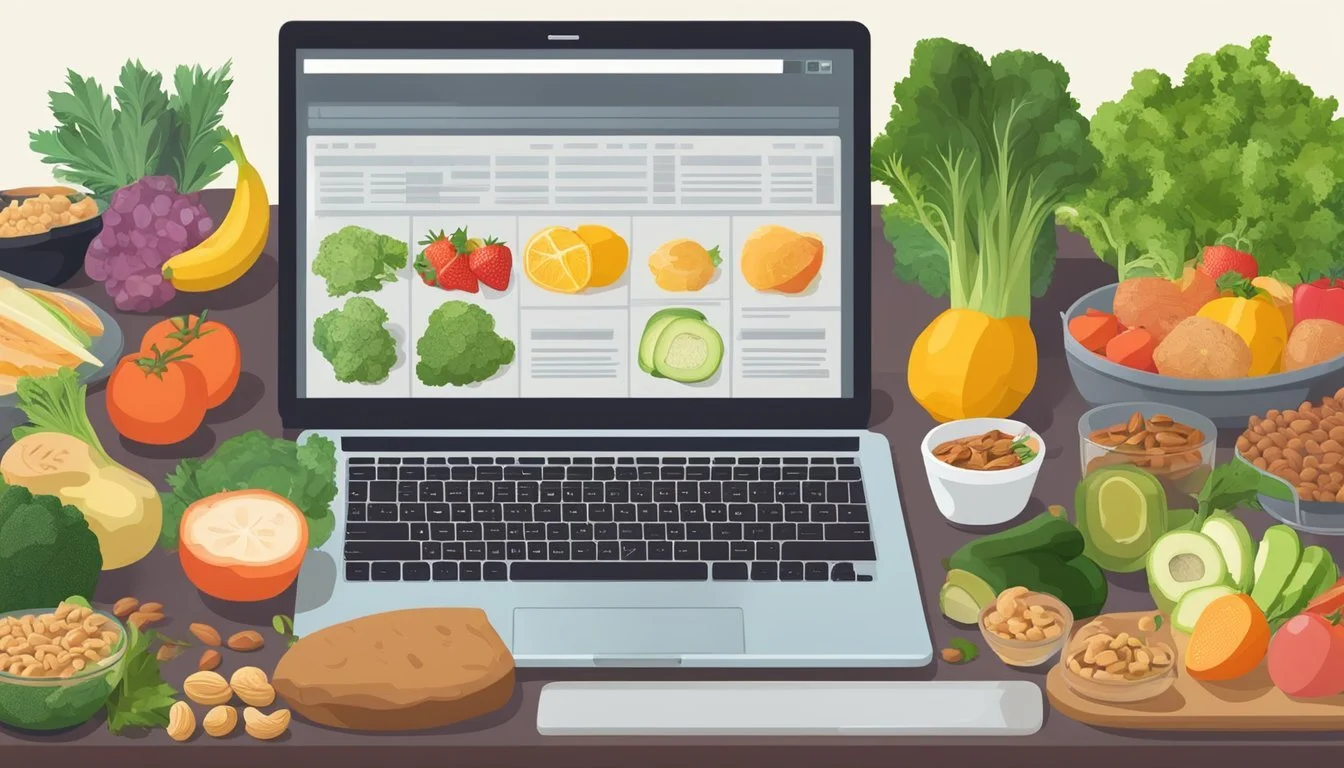The Best Paleo Diet Blogs and Websites to Follow for Nutritional Insights and Recipes
The Paleo diet, also known as the caveman diet, emphasizes eating as our Paleolithic ancestors did – focusing on whole, unprocessed foods. This way of eating not only supports weight management but also aims at enhancing overall health. As the Paleo lifestyle continues to gain traction, numerous resources have sprung up to assist individuals on this journey. An array of blogs and websites dedicated to the Paleo diet provide a wealth of recipes, meal plans, and advice, making it easier for followers to maintain this dietary practice.
Among the plethora of online resources, certain Paleo diet blogs have distinguished themselves as reliable and authoritative sources. Mark's Daily Apple is one such standout, launched by health and fitness expert Mark Sisson, it has been pivotal in building awareness around the Paleo lifestyle. The blog offers a comprehensive look at various health topics and practical tips for followers. Similarly, Nom Nom Paleo stands out with Michelle Tam at the helm, often referred to as the Queen of Paleo Cooking, her website serves as a haven for those seeking inventive Paleo recipes and meal planning guidance.
The Paleo community is broad and diverse, encompassing a spectrum of individuals all pursuing improved health through natural, nutrient-dense foods. Blogs by figures like the scientist behind The Paleo Mom further enrich the community with insights into leading a healthy Paleo family life, and other bloggers continue to inspire with a shared commitment to keeping followers motivated on their wellness journeys. These platforms have proven to be indispensable for both newcomers to the Paleo diet and long-term enthusiasts seeking to expand their culinary repertoire and knowledge.
Understanding the Paleo Diet
The Paleo Diet emphasizes eating in a way that mimics the diets of our pre-agricultural ancestors, focusing on whole foods and eschewing processed items.
What Is the Paleo Diet?
The Paleo Diet is a nutritional approach that encourages consumption of foods that would have been available to humans prior to the advent of agriculture. It primarily includes vegetables, fruits, nuts, seeds, and lean meats, particularly those sourced from wild or grass-fed animals. The diet excludes foods like grains, legumes, dairy, and processed foods, which became staples in the human diet after farming and animal husbandry were developed.
The Science Behind Paleo
The science behind the Paleo Diet is rooted in the notion that modern dietary habits are mismatched with the human species' evolutionary adaptations. This mismatch is believed to contribute to the prevalence of obesity, heart disease, and diabetes. Proponents argue that by eating foods that our Paleolithic ancestors consumed, one's body can operate more optimally, avoiding foods that may cause chronic diseases due to the body not being fully adapted to digest them, like grains and legumes.
Health and Nutrition Benefits
Individuals following the Paleo Diet may experience various health and nutrition benefits. These purported benefits include:
Weight loss and improved body composition: due to a higher protein intake and lower carbohydrate consumption.
Improved glucose tolerance: by avoiding refined sugars and grains.
Better digestive health: through the elimination of dairy and processed foods which are associated with gastrointestinal issues for some individuals.
Reduced inflammation: as it promotes a high intake of anti-inflammatory omega-3 fatty acids found in fish and grass-fed meats.
Nutrients such as fiber, antioxidants, and phytonutrients are obtained from the diet's emphasis on whole, unprocessed foods. However, it is crucial to ensure a balanced intake of all essential nutrients, as there is the potential for deficits in vitamins and minerals typically found in excluded food groups like dairy and grains.
Essential Paleo Diet Foods
When adopting a paleo diet, it is critical to focus on whole, unprocessed foods that align with ancestral eating patterns. This includes a variety of meats, seafood, vegetables, fruits, nuts, and seeds while eliminating dairy, grains, legumes, and processed sugars.
Meat and Fish Essentials
Paleo diets heavily emphasize the consumption of meat and fish, as they are rich sources of protein and essential nutrients. Key options include:
Grass-fed meats: Beef, lamb, and pork that are grass-fed are preferred for their higher omega-3 content and conjugated linoleic acid.
Poultry: Chicken and turkey should be free-range or organic when possible.
Seafood: Salmon, mackerel, and other fatty fish are encouraged for their omega-3 fatty acids. Shellfish and white fish also contribute significant protein.
The Role of Fruits and Vegetables
Fruits and vegetables are the main sources of carbohydrates on a paleo diet:
Vegetables: Leafy greens, broccoli, peppers, and root vegetables like sweet potatoes and carrots offer vitamins, minerals, and fiber.
Fruits: Berries, apples, and citrus fruits provide antioxidants and can satisfy sweet cravings in a healthy way.
Nuts and Seeds on Paleo
Nuts and seeds are valued for their healthy fats, proteins, and micronutrients:
Nuts: Almonds, walnuts, and cashews are go-to snack options but should be consumed in moderation due to their high-calorie content.
Seeds: Chia, flaxseeds, and pumpkin seeds are packed with beneficial fats and can be sprinkled on salads or incorporated into meals.
What to Avoid: Dairy, Grains, and More
The paleo diet excludes certain food groups that are considered to be products of modern agriculture:
Dairy: Milk, cheese, and butter are typically avoided on paleo, with some exceptions like clarified butter or ghee.
Grains: Wheat, oats, rice, and other grains are not consumed due to their potential to cause inflammation and gut irritation.
Legumes: Beans, lentils, and peanuts are excluded as they can be difficult to digest and may contain anti-nutrients.
Sugars: Refined sugars and high-fructose corn syrup are eliminated in favor of natural sweetness from fruits.
Top Paleo Diet Recipes and Meal Ideas
The Paleo diet incorporates whole, unprocessed foods that reflect what might have been eaten during the Paleolithic era. These recipes and meal ideas stay true to this principle, offering nutritional benefits with appealing flavors. They range from quick meals for the busy individual to delightful desserts that avoid refined sugars and grains.
Quick and Easy Paleo Meals
For those short on time, quick and easy Paleo meals are a must. One practical and healthy recipe is a Roast Chicken with herbs and garlic. It can be paired with a salad or roasted vegetables for a complete meal. A Spaghetti Squash Bowl using paleo-friendly tomato sauce is another time-saver, substituting spaghetti squash for traditional pasta.
Roast Chicken: Season a whole chicken with herbs and bake until the juices run clear.
Spaghetti Squash Bowl: Top spaghetti squash with a homemade tomato sauce and your choice of protein.
Family-Friendly Paleo Recipes
Creating family-friendly Paleo recipes ensures everyone enjoys nutritious meals together. A one-pan dish such as Paleo Meatloaf made with lean ground meat and almond flour can please a crowd and simplify dinner. For a satisfying side, consider Sweet Potato Fries baked with olive oil and a sprinkle of sea salt.
Paleo Meatloaf: Mix ground meat with almond flour, egg, and spices, then bake.
Sweet Potato Fries: Slice sweet potatoes, toss with oil and bake until crispy.
Paleo Desserts and Treats
Ending the meal with a Paleo dessert allows for a treat without straying from dietary principles. Paleo Pumpkin Pie, made with an almond flour crust and a filling of pumpkin puree and coconut milk, celebrates traditional flavors. For a no-bake option, Almond and Date Energy Balls offer a quick snack or sweet bite.
Paleo Pumpkin Pie: Combine pumpkin puree with coconut milk and pour into an almond flour crust.
Almond and Date Energy Balls: Process almonds and dates together, then roll into balls.
Each recipe and meal idea presented adheres to Paleo guidelines, ensuring they are grain-free, dairy-free, and free of processed ingredients. These dishes are designed to cater to various needs and preferences while maintaining a balanced approach to eating.
Lifestyle Management on Paleo
Adopting a Paleo lifestyle extends beyond dietary changes, encompassing overall wellness, including fitness, weight management, autoimmune health, plus fashion and beauty considerations.
Balancing Fitness and Diet
For individuals following a Paleo diet, fitness routines should complement their nutritional choices. Strength training and high-intensity interval training (HIIT) are popular among Paleo enthusiasts because they echo primal movement patterns and can be effective without excessive duration. A balanced approach ensures that one consumes adequate protein and healthy fats to fuel workouts and aid in recovery.
Paleo for Weight Loss
Weight loss on a Paleo diet typically stems from a focus on whole foods and an elimination of processed items, which naturally leads to a reduction in calorie intake. Those aiming for weight loss are encouraged to prioritize leafy greens, lean proteins, and to include healthy fats in moderation, which aid in satiety and prevent overeating.
Paleo and Autoimmunity
The Autoimmune Protocol (AIP), a stricter version of the Paleo diet, is designed to reduce inflammation and soothe the digestive system. AIP eliminates foods like nuts, seeds, and nightshades, which are believed to affect those with autoimmune conditions. The goal is to support immune function and manage autoimmunity through a tailored nutritional plan.
Fashion, Beauty, and Wellness
Paleo lifestyle aficionados often seek natural alternatives in other areas of life, including fashion and beauty products, reflecting their commitment to wellness. This includes a preference for organic fabrics, and beauty products free from synthetic chemicals. Wellness practices, such as mindful meditation and adequate sleep, are also key components that support a holistic Paleo lifestyle.
Leading Paleo Diet Blogs and Personalities
Recognizing the front-runners in Paleo blogging and media is crucial for enthusiasts seeking credible information and fresh inspiration. These influencers range from seasoned authors to kitchen virtuosos, each contributing unique content to the Paleo community.
Influential Bloggers and Authors
Michelle Tam is renowned for her culinary prowess on Nom Nom Paleo, offering a rich collection of 100% Paleo recipes. Her engaging content and easy-to-follow meal plans make her a go-to source for Paleo cooking.
At The Paleo Mom, Dr. Sarah Ballantyne provides in-depth scientific insights into the Paleo lifestyle alongside family-friendly recipes. Her expertise as a researcher amplifies the trust in her guidance.
Juli Bauer of PaleOMG and author Danielle Walker blend personal storytelling with a variety of Paleo-friendly recipes which are both approachable and satisfying.
Russ Crandall at The Domestic Man focuses on nutrient-dense recipes that adhere to Paleo principles without compromising on flavor.
Mark's Daily Apple, spearheaded by Mark Sisson, dives into fitness and diet, delivering a holistic approach to Paleo living with resources like Primal Kitchen.
Must-Follow Paleo Social Media Accounts
The Instagram account of Paleo Running Momma showcases both her athletic pursuits and her culinary creations, offering followers a dose of inspiration and practical meal ideas.
Primal Palate stands out on various platforms for its array of recipe options and the renowned Primal Kitchen product lines, emphasizing clean, Paleo-friendly ingredients.
Melissa Joulwan shares her Paleo journey on social media, providing a blend of lifestyle tips and robust Paleo recipes that resonate with a broad audience.
Civilized Caveman shares compelling content associated with George Bryant's heartfelt approach to Paleo living and the culinary world.
Podcasts for Paleo Enthusiasts
Robb Wolf, a veteran in the Paleo space, offers valuable advice on diet and fitness in his podcast, helping listeners navigate the intricacies of a Paleo lifestyle.
The Paleo Solution Podcast is one valuable reservoir of knowledge, with episodes covering various topics from nutrition science to practical everyday applications.
The Paleo View features both The Paleo Mom, Dr. Sarah Ballantyne, and Stacy Toth, focusing on family-oriented discussions about living Paleo.
The PaleOMG Podcast with Juli Bauer blends life updates, interviews, and listener Q&As, providing a personal touch that resonates with her audience.
Paleo Diet Resources and Tools
Navigating the Paleo lifestyle is easier with the right support, from comprehensive cookbooks to modern technology that simplifies meal planning. Carefully curated resources can help adherents maintain their diet without sacrificing flavor or breaking the bank.
Comprehensive Cookbooks and Guides
Cookbooks and Guides
Nom Nom Paleo: Authored by Michelle Tam, these cookbooks are a treasure trove for Paleo adherents. Detailed meal plans are combined with accessible recipes that cater to beginners and seasoned Paleo followers alike.
Paleo Grubs Book: Offering over 470 recipes, the Paleo Grubs book is a substantial guide that helps diversify meal options.
Irena Macri's Eat Drink Paleo: Irena Macri provides a rich collection of paleo recipes that emphasize fresh ingredients and simple cooking techniques tailored to fit the Paleo diet.
Helpful Paleo Apps and Tech
Paleo Apps
Ultimate Meal Plans: Developed by Ultimate Paleo Guide, this app simplifies the process of following a Paleo, keto, or other specialized diets with tailored meal plans.
Nom Nom Paleo App: A comprehensive app that corresponds with the Nom Nom Paleo cookbooks, providing shopping lists, step-by-step cooking instructions, and more.
Tech Tools
Meal planning apps incorporate technology to assist in organizing weekly meals, generating shopping lists, and tracking nutritional intake.
Budgeting for a Paleo Lifestyle
Enabling a Paleo lifestyle on a budget requires strategic planning and knowledge of where to allocate funds for the greatest benefit.
Budget-Friendly Tips:
Buying in Bulk: Purchasing grass-fed meats and Paleo staples like nuts and seeds in bulk can significantly reduce expenses.
Prioritize Investments: Allocate more budget to staple items like high-quality proteins, while finding cost-effective solutions for other components of the diet.
Paleo Treats: Incorporate items such as Paleo Treats sparingly; while more expensive, they add variety and indulgence to the diet without straying from its principles.
Creative Paleo Dining and International Cuisine
Adopting the Paleo diet doesn't mean sacrificing flavor or cultural diversity. This section explores how individuals can maintain this lifestyle while enjoying a broad spectrum of international cuisines and provides specific insights into dining out Paleo-style around the globe.
Paleo-Friendly Restaurants and Tips
Paleo diners can still enjoy restaurant experiences by seeking out establishments that offer grain-free and dairy-free options. They should consider contacting restaurants ahead of time to inquire about Paleo-friendly menu items. Furthermore, tips for dining out include:
Selecting restaurants with customizable meal options allows Paleo diners to navigate menus confidently.
Opting for dishes centered around lean proteins and vegetables, often featured in cuisines like Mediterranean or Asian, can result in a satisfying Paleo meal.
Some restaurants may also cater to Paleo customers by using almond or coconut flour, an approach taken by Texanerin Baking, which provides options fitting within the Paleo framework.
Global Paleo Recipe Inspirations
The diversity of international Paleo recipes reflects the diet's adaptability. For instance:
Asian cuisine: Uses coconut aminos as a substitute for soy sauce to create bold flavors.
Italian dishes: Replace traditional pasta with spiralized vegetables or grain-free alternatives.
Cooking at home allows individuals to experience global flavors while adhering to the Paleo diet principles. Paleo pioneers often share international recipes that retain the essence of the dish while making necessary dietary adjustments.
Paleo Travel and Eating Out
Traveling on a Paleo diet requires preparation. Individuals should:
Research: Look for local Paleo-friendly restaurants or shops at the travel destination.
Pack snacks: Consider transporting Paleo-approved snacks for those moments when options are scarce.
Paleo travelers might seek lodgings with kitchenettes to prepare their own meals. This ensures access to Paleo-friendly recipes, no matter where they are in the world, and maintains a consistent diet.
Troubleshooting and Overcoming Challenges
Adopting a Paleo diet often comes with its own set of hurdles, from initial dietary adjustments to maintaining the lifestyle long-term. This section is dedicated to navigating the common obstacles encountered and strategies for staying true to your Paleo commitments.
Common Paleo Diet Pitfalls
Paleo novices often stumble into common pitfalls such as inadvertently consuming non-compliant items or struggling to find suitable food options when dining out. To stay on track, it's imperative to keep a list of Paleo-approved foods handy, and to always double-check ingredient lists as dairy-free and grain-free requirements are crucial. Familiarizing oneself with Paleo alternatives can make the transition smoother – consider using coconut flour or almond flour instead of traditional flours for a gluten-free lifestyle.
Managing Cravings and Social Settings
Paleo individuals sometimes encounter difficulty in social settings, where they must navigate a landscape often dominated by non-Paleo choices. To manage cravings, they can:
Prepare by eating a compliant meal before attending social events.
Bring their own Paleo-friendly dishes to share.
Seek inspiration from online resources which offer a multitude of recipes that mimic traditional favorites.
Having a game plan empowers them to stick to a low-carb, Whole30, or general Paleo regimen even in challenging social situations.
Staying Motivated and Inspired
Maintaining motivation can be challenging, especially when results might not be immediately visible. Paleo enthusiasts can draw inspiration from the hunter-gatherer ethos, see themselves as part of a resurgence of a primal lifestyle, and continually seek out meals that are both nourishing and exciting. Online Paleo communities and blogs are valuable sources for new recipes, success stories, and tips for a sustainable Paleo journey. By setting small, attainable goals and celebrating each milestone, they reinforce their commitment to a healthier lifestyle.
Success Stories and Transformation Tales
The allure of the Paleo lifestyle lies in the remarkable stories of individuals turning their lives around. These narratives offer tangible proof of the diet's benefits and serve as a beacon for those on their health journey.
Real-Life Paleo Successes
Real people, real results—Paleo success stories document significant life transformations. They often cover a range of improvements, from dramatic weight loss to enhanced well-being. For instance, A Girl Worth Saving recounts several anecdotes such as Stacey's loss of 135 pounds and Jennifer's decision against gastric bypass leading to a loss of 100 pounds. These accounts provide a source of inspiration for individuals embarking on their Paleo journey.
Blogs like Paleo Running Momma harmonize the love for endurance sports with Paleo eating principles, showcasing that high-level physical performance can be supported by this diet. Such platforms have crystallized the connection between Paleo diets and improved athletic capability.
Celebrity and Athlete Endorsements
The community's passion for Paleo is boosted by stories of celebrity and elite athlete endorsements. These figures often cite increased energy levels, better recovery, and overall performance enhancements. The Paleo Solution, penned by Robb Wolf, a former research biochemist and strength coach, offers insights into how adopting a Paleo diet can catalyze health transformations. His work underscores the scientific backing of the diet, lending credibility to the Paleo approach.
These champions of Paleo not only support the diet's principles but also contribute to the community, strengthening the network of those who have experienced positive changes. The fashion in which they share their experiences—whether through blogs, podcasts, or interviews—reinforces the diet's potential for success.











